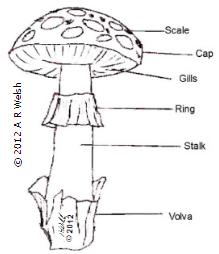A new title -
Biology
Life, Studied.
A Study & Revision
Guide
IGCSE & beyond
through AS to IB Diploma and A-Level
to University entrance.
Contents
Page
4 Introduction
5 Measurements used in Biology
6 How to use the guide
7 Unit 1 – Classification and Variety of Organisms
25 Unit 2 – Plant and Animal Cells
60 Unit 3 – Nutrition in Plants
73 Unit 4 – Support in Plants and Animals
91 Unit 5 – Gaseous Exchange in Animals
105 Unit 6 – Transport Systems in Plants and Animals
132 Unit 7 – Respiration
148 Unit 8 – Diet, Biochemicals & Digestion
187 Unit 9 – Control Systems – Homeostasis, Nerves and Hormones
240 Unit 10 – Inheritance & the Genetic Code
263 Unit 11 – Variation Plant and Human Reproduction
303 Unit 12 – Genetics, Selection and Evolution
347 Unit 13 – Ecology and Environment
410 Unit 14 – Graphing and Data Presentation
416 Unit 15 – Microbiology and Biotechnology
447 Unit 16 – Human Health & Disease
461 Unit 17 – Safety Symbols
Currently, it is all written down and editing is occurring. It will proceed to the publishers in Kuwait for hard copy production. Before that it will go to Kindle.
Anyway, as a taster here are some sections from Unit 1........
To avoid confusion around the world and even within a country, the Swedish scientist Karl Linne (Carol Linnaeus), came up with binomial nomenclature (using two names) in Latin for the naming of organisms. The two parts of the name include the genus and species names. They are written in italics if we are using a word processing system. If we are writing by hand, then we underline the names using a ruler.
The Eurasian Red Squirrel is named as Scuirus vulgaris under this system. As you would guess, the local names just within Europe will be many, but all references should include the Latin name so no confusion occurs when talking about particular organisms between biologists around the world.
At family and genus level organisms can look very similar and we have to be able to tell them apart. Keys (dichotomous ones) can be prepared by those who know the organisms well to help those who are unfamiliar with them, be able to identify them.
We need to be able to read and prepare dichotomous keys.
Here are four beetles:
Key
1. Does the beetle have a long narrow abdomen (body)?
If yes ------------------------------------------- Cockroach.
If no --------------------------------------------- Go to question 2.
2. Does the beetle have any spots on its’ wing cases (elytra)?
If yes ------------------------------------------- Go to question 3.
If no -------------------------------------------- Staghorn beetle.
3. Does the beetle have more than one spot on each elytra?
If yes --------------------------------------------- 6 Spot Ladybird.
If no ---------------------------------------------- 2 Spot Ladybird.
This might appear simple, but this example has been made obvious to demonstrate the idea.
This skill will be useful when we are presented with keys in examination situations or have to use one when doing other studies (looking at species diversity in ecology, for example).




